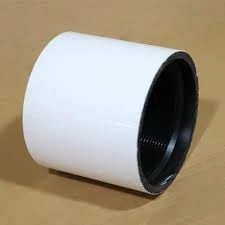- Afrikaans
- Albanian
- Amharic
- Arabic
- Armenian
- Azerbaijani
- Basque
- Belarusian
- Bengali
- Bosnian
- Bulgarian
- Catalan
- Cebuano
- Corsican
- Croatian
- Czech
- Danish
- Dutch
- English
- Esperanto
- Estonian
- Finnish
- French
- Frisian
- Galician
- Georgian
- German
- Greek
- Gujarati
- Haitian Creole
- hausa
- hawaiian
- Hebrew
- Hindi
- Miao
- Hungarian
- Icelandic
- igbo
- Indonesian
- irish
- Italian
- Japanese
- Javanese
- Kannada
- kazakh
- Khmer
- Rwandese
- Korean
- Kurdish
- Kyrgyz
- Lao
- Latin
- Latvian
- Lithuanian
- Luxembourgish
- Macedonian
- Malgashi
- Malay
- Malayalam
- Maltese
- Maori
- Marathi
- Mongolian
- Myanmar
- Nepali
- Norwegian
- Norwegian
- Occitan
- Pashto
- Persian
- Polish
- Portuguese
- Punjabi
- Romanian
- Russian
- Samoan
- Scottish Gaelic
- Serbian
- Sesotho
- Shona
- Sindhi
- Sinhala
- Slovak
- Slovenian
- Somali
- Spanish
- Sundanese
- Swahili
- Swedish
- Tagalog
- Tajik
- Tamil
- Tatar
- Telugu
- Thai
- Turkish
- Turkmen
- Ukrainian
- Urdu
- Uighur
- Uzbek
- Vietnamese
- Welsh
- Bantu
- Yiddish
- Yoruba
- Zulu
well casing coupling
Understanding Well Casing Couplings Essential Components in Oil and Gas Extraction
In the oil and gas industry, the exploration and extraction process involves various intricate components that work in harmony to ensure safety, efficiency, and effectiveness. Among these components, well casing couplings play a pivotal role in maintaining the integrity of the wellbore. This article delves into the significance, types, and applications of well casing couplings, shedding light on their impact on drilling operations.
What is Well Casing?
Before discussing well casing couplings, it's crucial to understand what well casing itself is. Well casing refers to the series of pipes installed in the drilled wellbore. These pipes provide structural support, prevent the collapse of the well, and isolate water layers from oil and gas zones. The casing also helps protect the environment by preventing the migration of fluids between geological formations.
The Role of Couplings
Couplings are essential devices that connect different sections of casing together. They ensure that the individual casing strings can be securely attached, providing a continuous and leak-proof structure. The effectiveness of a well casing system relies heavily on the quality and integrity of these couplings, as they must withstand extreme pressures and temperatures typically found in oil and gas wells.
Types of Well Casing Couplings
There are primarily two types of couplings used in well casing threaded couplings and welded couplings
.1. Threaded Couplings These are the most common type, allowing for easy assembly and disassembly. Threaded connections are often used in situations where the need for future modifications or inspections is anticipated. They provide a reliable seal and can accommodate thermal expansion and contraction during the drilling process.
well casing coupling

2. Welded Couplings Welded couplings offer a more permanent solution. They are typically employed in high-pressure environments where the risk of failure must be minimized. The welded joint creates a solid connection that can enhance the casing's overall strength, but it complicates future retrieval or modification due to the permanent nature of the weld.
Applications and Benefits
The applications of well casing couplings extend beyond oil and gas extraction. They are utilized in geothermal wells, water wells, and even in environmental monitoring wells. The benefits of using high-quality couplings include
- Increased Safety Well casing couplings provide structural integrity, reducing the likelihood of well failure, which could lead to catastrophic environmental incidents.
- Cost-Effectiveness By ensuring the everlasting and efficient performance of the casing system, couplings can reduce the costs associated with repairs and maintenance over time.
- Adaptability Depending on the conditions of the well—whether high-pressure, high-temperature, or corrosive environments—different coupling designs can be employed to ensure reliability.
Conclusion
In summary, well casing couplings are critical components in the oil and gas extraction process. Their significance cannot be overstated, as they play an essential role in maintaining the structural integrity of wellbores while ensuring safety and efficiency. Understanding the different types of couplings and their applications allows engineers and operators to make informed decisions that enhance the longevity and performance of drilling operations. By investing in quality well casing couplings, the industry can not only optimize extraction processes but also uphold environmental and operational safety standards.
-
Tubing Pup Joints: Essential Components for Oil and Gas OperationsNewsJul.10,2025
-
Pup Joints: Essential Components for Reliable Drilling OperationsNewsJul.10,2025
-
Pipe Couplings: Connecting Your World EfficientlyNewsJul.10,2025
-
Mastering Oilfield Operations with Quality Tubing and CasingNewsJul.10,2025
-
High-Quality Casing Couplings for Every NeedNewsJul.10,2025
-
Boost Your Drilling Efficiency with Premium Crossover Tools & Seating NipplesNewsJul.10,2025







